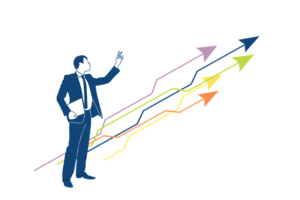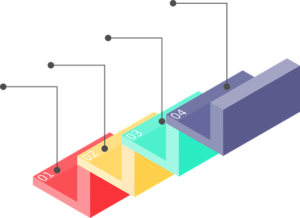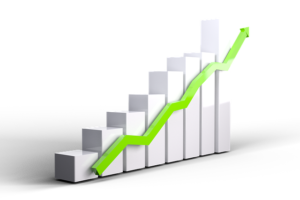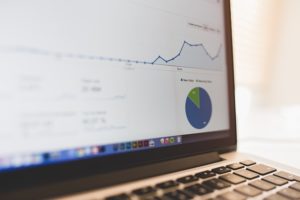This section presents the steps for developing your business plan. This is the basic information that you will be required to provide to lenders and investors and is the minimum you’ll need to operate your business effectively.
Read each step and complete the tasks outlined in each. Then, depending upon the nature of your business, you may want to add further information that may prove valuable to potential investors and lenders. Where possible, examples will be included to provide you with further clarification on what you should supply. Following is a ten-step process you can use to develop your business plan. (process for developing your business plan)

• Begin the Plan with a Summary
• Describe Your Company—Its Business, Goals and Objectives
• Analyze Your Market and Determine Your Marketing Strategy
• Describe Your Product/Service and How They are Produced
• Describe Your Management Organization
• Describe Your Operations
• Summarize Your Financial Needs
• Determine Your Proposed Financing
• Outline Your Plan(s) for the Future
• Other Considerations
These steps are presented in a logical order for discussion. Use your judgment on how you work through the process. You may be able to perform many of the steps simultaneously. Use the checklists provided in each step to ensure that your information is complete.
Begin The Plan With a Summary
Most investors and lenders are inundated with potential opportunities, so provide a focused and brief summary about one or two pages in length.

Your summary will give them a first impression of whether your business is worth further consideration. A business plan is unique to your company and, accordingly, the approach used and structure of plans vary considerably. Regardless of form, however, certain basic questions should be addressed considering your plan. They are(process for developing your business plan)
• Cover Sheet: Include the company name, owner’s name(s), business address, and phone number.
• Business Description: Briefly describe the business that you are in. For instance, is your business in high tech computer imaging, or are you a developer of shopping malls? If you have an existing company, describe your company’s history, highlighting your successes/ achievements that might be pertinent. Also, include your major short-term and long-term goals and objectives with the strategy and tactics that will enable you to achieve them.
• Plan Purpose: Describe the purpose of your business plan. Are you seeking financing from lenders and investors or are you using it to attract potential managers for your business?

• Products/Services: Describe your product/service sufficiently so that someone reasonably familiar with the technology or the industry can determine whether it is viable and what stage of development it’s in (concept, prototype, or market-ready). Discuss the extent of invention or development required for successful commercialization of the product/service. Highlight the track record of key personnel who have completed similar developments. Explain why your product/service is better than what exists. Don’t forget to include proprietary or any other sustainable competitive advantage that you may have. For instance, do you own any patents? Does your location restrict entry of additional competitors?
• Critical Factors: Describe the five or six critical factors that will make a difference in your success. Also, discuss your most vulnerable spot. What would happen if it were exposed, and what you will do to guard against it? For example, if you are a high tech firm in the computer imaging business, potential factors might be key R&D personnel, a highly trained workforce, state-of-the art imaging equipment, and a strategic alliance with a reputable technical school.(process for developing your business plan)
• Customers: List your present major customers and/or describe your market potential. You’ll want to highlight the results of your market analysis here.
• Financial Picture: Describe your financial forecasts and explain how they were determined. Include relevant assumptions such as projected market share, market potential, market penetration, etc. State your desired financing and show how the funds will be allocated. Show when and how the money will be paid back.(process for developing your business plan)
Describe Your Products/Services And How They Are Produced
Describe your product/service in layman’s terms. Explain any niche you may have. Discuss your competitive advantage: Why people will choose your product over your competitors’, the benefits of your product/service, and how you will sustain your edge.

• Product Lines: Detail the features and benefits of your product/service. Remember, features are the characteristics of a product or service that automatically comes with it. The benefit is the result your customer enjoys—in other words, what he gets from it. For instance, a telephone company may offer an automatic switching line to re-route calls to another location in the case of a power failure. That’s the feature. The benefit to the customer is that potential sales will not be lost.(process for developing your business plan)
• Offerings: Explain how you acquire, produce or develop your offerings. Do you manufacture all of your products or do you purchase some from other vendors? Do you utilize contract manufacturers? Is your service provided internally or do contract employees perform a portion of them? If your business is manufacturing or retail, list your suppliers, average inventory costs, and timing of deliveries.
• Unique Features: Explain your competitive advantage. What makes your product/service better, faster, more durable, etc.? Include any proprietary features. Do you have any patents, copyrights, trademarks? Include evidence of these in your appendix. Also, describe how you are going to sustain your competitive advantage.(process for developing your business plan)
Describe Your Management Organization
Describe your business structure. Also, include a discussion of your management team in this section. List officers and/or principal owner/managers, and detail your management team’s responsibilities and qualifications. Referring to the Business Builder “How to Determine the Legal Structure of Your Business” may help you with this step (available online at www.resources.zionsbank.com). Make sure you include

• Legal Structure: If you are an existing business, describe your business structure. If you’re just starting out, your options include sole proprietorship, general partnership and joint venture, limited partnership, corporation, S corporation and limited liability corporation. Consult with your accountant and lawyer to determine the best approach for structuring your business.(process for developing your business plan)
• ManagementTeam: Show that you have the talent in place to develop your product/ service, sell it, and manage the financials. Explain your hiring criteria, training plan, salary and benefits structure, and your system for performance evaluation. Financiers invest in people, especially people who have run or are likely to run successful operations. Potential investors and lenders will look closely at the members of your management team. Your team should have experience and talents in the most important functions of your business, whether it’s research and development, sales and marketing, manufacturing or finance. You may want to include an organizational chart to demonstrate functional interactions.
• Resumes: Attach detailed resumes for all key personnel in an appendix.
• Board of Directors: If you have a board, include their names and place of employment. If you have an advisory board, include them, too.
Describe Your Operations
Describe how you plan to operate your business. Go into detail about location, facilities, equipment, raw materials and suppliers, workforce, hours of operation, and methods of record keeping. Make sure you include

• Manufacturing or Service Operations: List your basic process for producing your product or service. You may want to use a flowchart to explain it.
• Location and Facilities: Describe the advantages and disadvantages. Location and facilities may be crucial to projecting your business image. They can provide you with a competitive advantage (e.g., modern, state-of-the-art facility, a strategic location). Provide plans of the exterior and interior if your customers will visit your facilities, or if you plan to manufacture your products.(process for developing your business plan)
• Equipment: List the equipment necessary for producing your product. Include leasing marrangements, service agreements, and warranties.
• Raw Materials and Suppliers: List the materials that go into producing your product and who will provide them to you. The reputation of your suppliers may be important to potential investors and lenders. Are any special considerations necessary for storage?
• Staffing Analysis: Your workforce projections should represent a head count by function or department for a specified time period. This analysis not only will allow you to better plan your hiring, but will also demonstrate to potential investors your plans to hire key personnel. Include job descriptions for all functions in your appendix.
Financial Forecast or Operating Budget?
There is a distinction between a budget and a financial forecast.

A budget is a company’s planned course of operating during a period and generally is structured to motivate performance as well as communicate the planning strategy. Budgets may or may not factor in the negative effects of all significant contingencies and uncertainties. The budget is prepared as part of the planning process, but normally is not an item for external distribution.(process for developing your business plan)
A financial forecast, on the other hand, is management’s best estimate of the company’s most likely results of operations and financial position in the forecast period. A good financial forecast is realistic, considers achievable opportunities and recognizes all cost factors and contingencies. More importantly, the financial forecast covers a much broader financial perspective; the impact of assets, liabilities, income, expenses, and cash sources and uses. It is this comprehensive, realistic forecast that is used in a business plan, not the budget.
Present Your Plan(s) For The Future
An important point to remember whether you’re planning a new business or expanding an existing business is that you must show that you have the potential for continued profitability. Be sure to include

• Startup Plan: Present the tasks involved, their priorities, how long each task will take, and who is responsible for each task. Also, include any “deliverables” for each task. Extend your plan through at least the first year.
• Three Year Plan: Again, provide the detail listed above in the startup plan. Project how your business will compete in years three to five. Much of this work has been done in the financial forecast, but you will want to support it with a clear explanation.